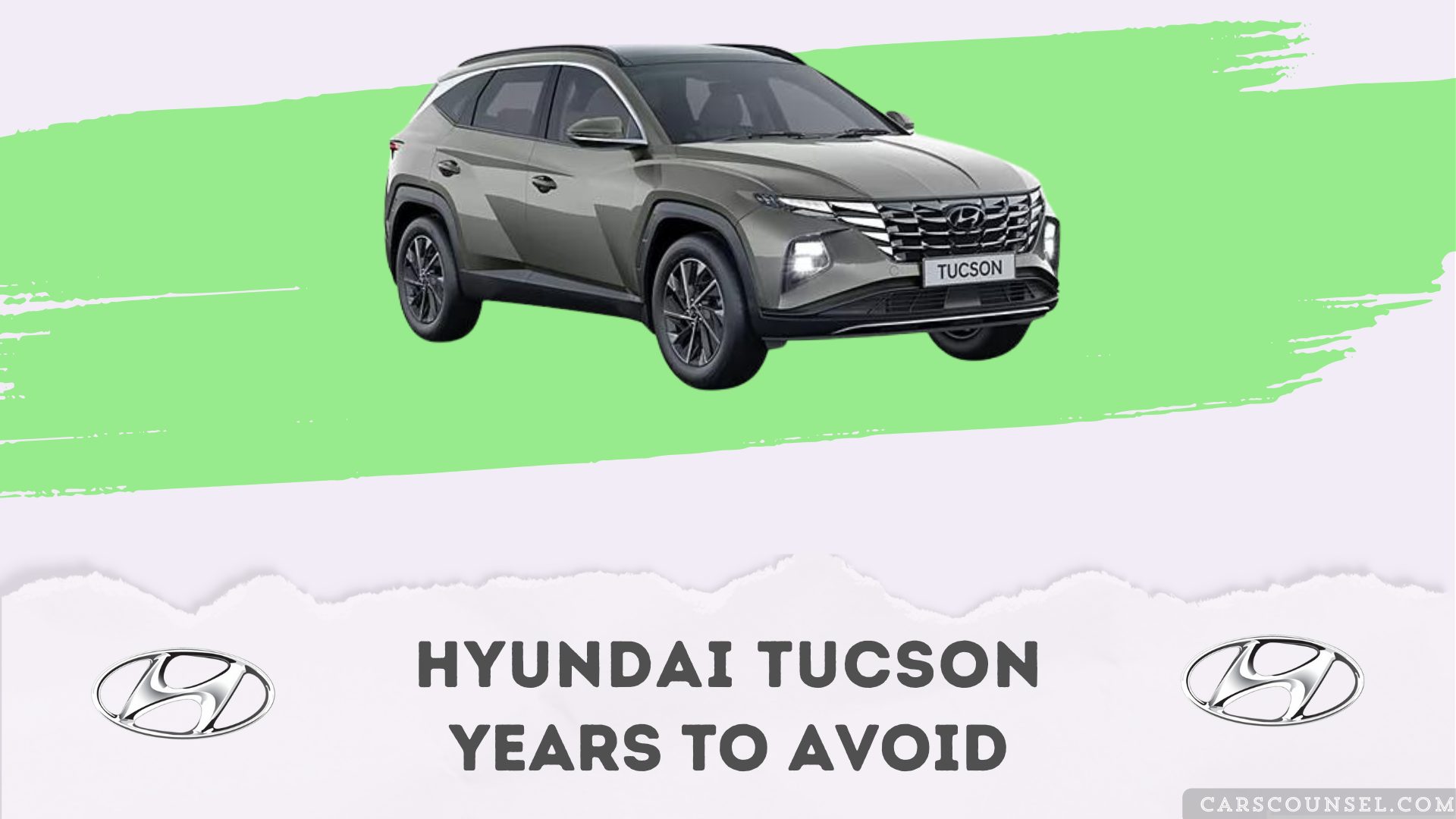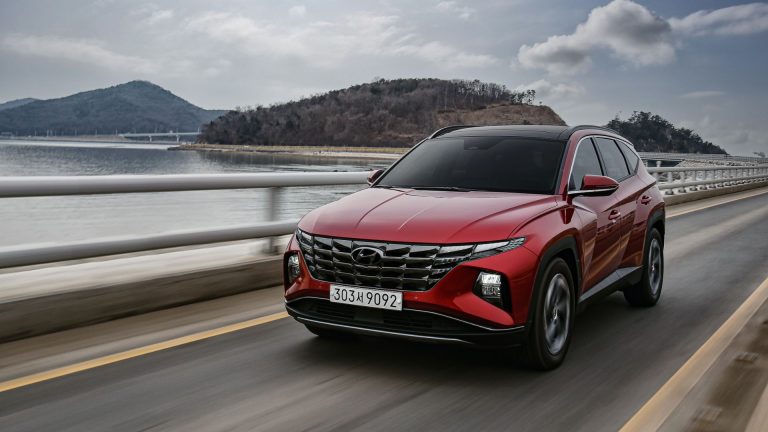Navigating the Hyundai Tucson: A Guide to Years to Consider and Avoid
Navigating the Hyundai Tucson: A Guide to Years to Consider and Avoid
Introduction
With great pleasure, we will explore the intriguing topic related to Navigating the Hyundai Tucson: A Guide to Years to Consider and Avoid. Let’s weave interesting information and offer fresh perspectives to the readers.
Table of Content
Navigating the Hyundai Tucson: A Guide to Years to Consider and Avoid

The Hyundai Tucson, a popular compact SUV, has enjoyed a long and successful run since its inception in 2004. However, like any car model, certain years have proven more reliable than others. Understanding the potential pitfalls of specific model years can help prospective buyers make informed decisions. This guide aims to provide a comprehensive overview of Hyundai Tucson years to consider and avoid, highlighting key areas of concern and offering insights into potential problems.
Years to Avoid
2005-2009: This generation of the Tucson was plagued by numerous issues, including:
- Transmission Problems: The 4-speed automatic transmission was known for premature failure, often requiring costly replacements.
- Engine Issues: The 2.0-liter four-cylinder engine experienced problems with oil leaks and timing chain failures.
- Electrical Glitches: Frequent electrical malfunctions, such as faulty sensors and wiring issues, caused various problems, including engine misfires and dashboard warning lights.
- Suspensions and Steering: Reports of suspension component failures, particularly in the front struts, were common.
- Rust and Corrosion: The body panels, especially in areas prone to moisture, were susceptible to rust and corrosion.
2010-2013: While generally more reliable than its predecessor, this generation still exhibited some shortcomings:
- Transmission Issues: The 6-speed automatic transmission, while an improvement, still had occasional problems with rough shifting and premature wear.
- Engine Concerns: The 2.4-liter four-cylinder engine, while more robust, still had instances of oil leaks and valve cover gasket failures.
- Electrical Problems: Electrical gremlins continued to plague this generation, with reports of faulty wiring harnesses and sensor malfunctions.
- Interior Quality: Some owners reported issues with interior materials, particularly the dashboard and door panels, showing signs of premature wear.
2014-2015: These model years are considered a transitional phase with a mix of positive and negative aspects:
- Improved Powertrain: The introduction of a new 1.6-liter turbocharged engine and a 7-speed dual-clutch transmission brought increased power and fuel efficiency. However, some owners reported transmission shuddering and occasional clutch slippage.
- Refinement and Technology: Significant improvements in interior design, technology, and safety features were implemented. However, some reported issues with the infotainment system and its responsiveness.
2016-2018: This generation saw a significant redesign and marked a positive shift in overall reliability:
- Improved Transmission: The 6-speed automatic transmission underwent further refinement, addressing many of the previous concerns.
- Engine Improvements: The 2.0-liter and 2.4-liter engines proved more reliable with fewer reports of oil leaks and other issues.
- Enhanced Technology: New safety features and an updated infotainment system were well-received, with fewer reports of glitches.
Years to Consider
2019-Present: This generation of the Tucson, built on a new platform, has consistently received positive reviews for its reliability and overall quality:
- Refined Powertrains: The engines and transmissions have been further optimized for better performance and fuel efficiency, with minimal reported issues.
- Modern Technology: The advanced infotainment system, driver assistance features, and safety technology are generally reliable and well-integrated.
- Improved Interior and Exterior: The interior and exterior design have been praised for their modern aesthetics and comfortable features.
Factors to Consider When Buying a Used Hyundai Tucson
While the above information provides a general overview, it’s crucial to conduct thorough research before making a purchase. Here are some key factors to consider:
- Vehicle History Report: Obtain a comprehensive vehicle history report from services like Carfax or AutoCheck to uncover any accidents, major repairs, or previous ownership issues.
- Maintenance Records: Request maintenance records from the seller to verify regular service intervals and any potential repairs.
- Test Drive: Thoroughly test drive the vehicle to assess its performance, handling, and overall condition.
- Inspection: Have a trusted mechanic inspect the vehicle before finalizing the purchase to identify any potential problems.
FAQs
Q: What are the most common problems with the Hyundai Tucson?
A: The most common problems typically relate to the transmission, engine, and electrical systems. The specific issues vary depending on the model year, as outlined in the previous sections.
Q: Is it a good idea to buy a used Hyundai Tucson?
A: While some model years have been more reliable than others, the Hyundai Tucson can be a good choice for a used car if you research thoroughly and choose a well-maintained vehicle from a reputable seller.
Q: How can I find a reliable used Hyundai Tucson?
A: Follow the factors listed above, including obtaining a vehicle history report, reviewing maintenance records, conducting a thorough test drive, and having the vehicle inspected by a mechanic.
Tips
- Prioritize Model Years: Focus on the 2019-present generation, which has consistently received high marks for reliability.
- Consider Certified Pre-Owned (CPO): CPO vehicles often come with extended warranties and have undergone rigorous inspections, providing additional peace of mind.
- Negotiate Price: Research the fair market value of the vehicle and negotiate a price that reflects its condition and any potential issues.
Conclusion
The Hyundai Tucson has evolved significantly over the years, with some model years experiencing more reliability issues than others. By carefully researching and considering the factors outlined above, prospective buyers can make informed decisions and increase their chances of finding a reliable and enjoyable used Hyundai Tucson. Remember, thorough research and due diligence are essential when purchasing any used vehicle.








Closure
Thus, we hope this article has provided valuable insights into Navigating the Hyundai Tucson: A Guide to Years to Consider and Avoid. We appreciate your attention to our article. See you in our next article!